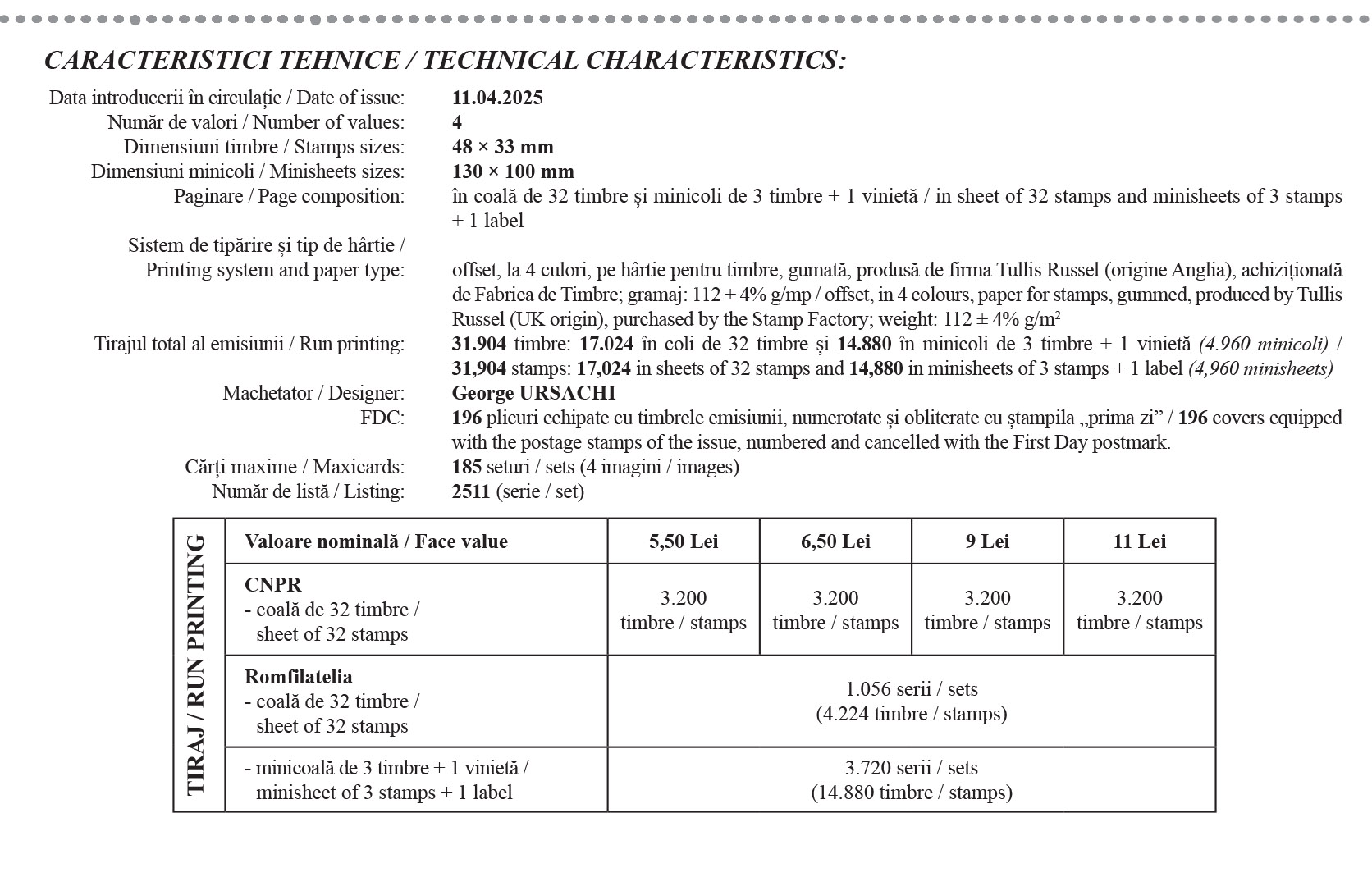 Romfilatelia dedicates a new issue to collectors and the general public passionate about the automotive theme. The issue, titled History of the Automobile (II), consists of four postage stamps, a First Day Cover, and four of maxicards, which will be released on Friday, April 11th this year. It offers philately enthusiasts unique images of car models from the early stages of automotive construction and innovation.
Romfilatelia dedicates a new issue to collectors and the general public passionate about the automotive theme. The issue, titled History of the Automobile (II), consists of four postage stamps, a First Day Cover, and four of maxicards, which will be released on Friday, April 11th this year. It offers philately enthusiasts unique images of car models from the early stages of automotive construction and innovation.
The beginnings of automobile history date back to the 18th century when Nicolas Joseph Cugnot conceived and built the first steam-powered automobile (1769).
In the modern sense, the first functional automobile, which preceded mass production, was invented by the German Karl Benz (1886). The automobile was equipped with a four-stroke internal combustion engine powered by gasoline. It had three wheels.
One of the first four-wheeled automobiles powered by a gasoline engine was manufactured by the Englishman Frederik William Lanchester in 1895, who also introduced an innovative change: the disc brake. The fuel pump, patented in 1901 by the Norwegian John Tokheim, maintained a constant fuel flow and increased engine efficiency. Later, tires and inner tubes contributed to increased comfort, noise reduction, and improved wheel traction.
The first mass production of automobiles was initiated by Karl Benz in Germany (1888), with the license also being adopted in France by Emile Roger.
The planetary gear transmission and the clutch played a significant role in modernizing and refining the engine-drive system, visibly improving the use of all essential automobile components. Later, front-wheel drive emerged, initially rejected by the Renault group but adopted by Citroën in 1934. Also, in 1934, the Chrysler Airflow was designed and produced, becoming the first mass-produced car with an aerodynamic design.
The postage stamps of the issue, wich depict images reproduced from period engravings, illustrate four automobile models: Mercedes 12/16 CP (the stamp with the face value of Lei 5.50), a 1903 model, represents the result of the collaboration between Karl Benz and Gottlieb Daimler.
At the request of an influential client, Emil Jelinek, they made significant improvements to the automobile and agreed to launch it under the name Mercedes (Mercedes being the name of Emil Jelinek’s daughter).
Peugeot Four-Seater Type 7 (the stamp with the face value of Lei 6.50) participated in the Paris-Bordeaux-Paris rally (1895) and was declared the winner. The tires supplied by the Michelin company played a decisive role in the victory.
Peugeot Two-Seater (the stamp with the face value of Lei 9), a model from the French company of the same name, founded in 1810. The company is known for its automobiles designed for individuals, as well as utility vehicles. It has been successfully involved in motorsports for more than a century.
Panhard et Levassor (the stamp with the face value of Lei 11), a model from a French company founded in 1867 by Emile Levassor and René Panhard. The company was also known for its light tactical and military vehicle models. Its activity ceased in 1918.
The First Day Cover reproduces in facsimile the covers of two well-known illustrated magazines, which featured relevant images of automobiles in urban environments and of rallies organized during that period.
By accessing the QR code on the minisheets of stamps, you will discover the story of the issue “History of the Automobile (II)”.
Romfilatelia thanks Engineer Marius Muntean, Ph.D., for his specialized consultancy in the development of this postage stamps issue.



